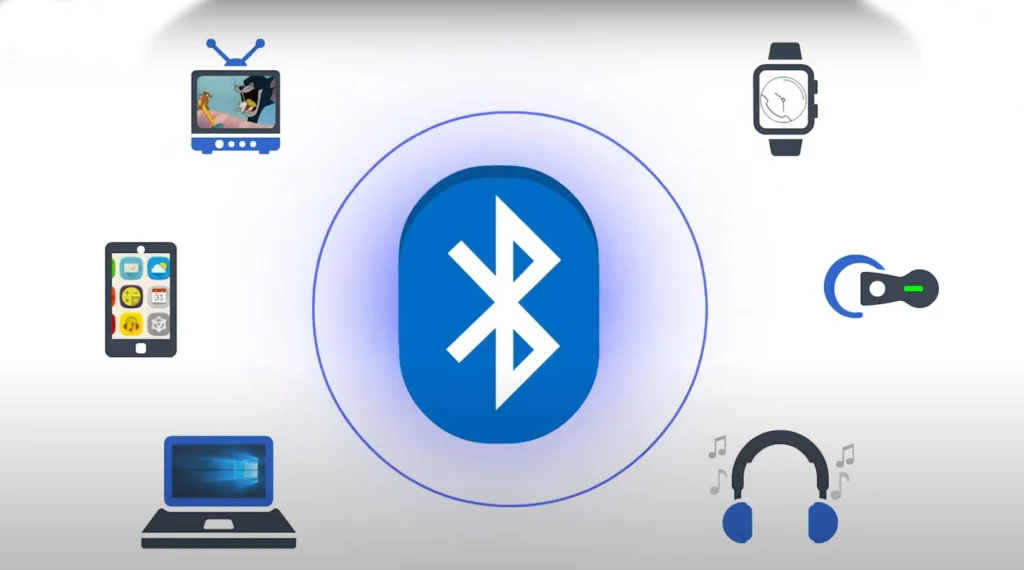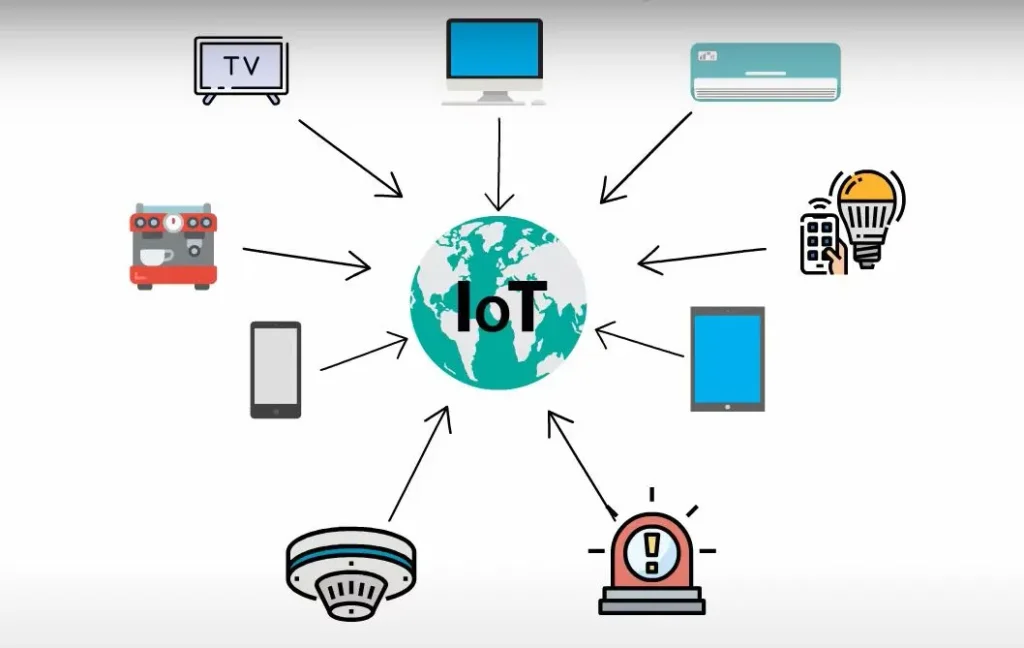The Internet of Things is growing faster than ever, and as a result, there are more connected devices than ever before. Wireless communication technologies are becoming more and more crucial to this growth. Currently, Wi-Fi, ZigBee and Bluetooth are the most widely used wireless communication technology standards of the Internet of Things (IoT), of these, most users are most familiar with Wi-Fi and Bluetooth. What distinguishes Wi-Fi from Bluetooth, and which is a better or more appropriate technology? The actual market application as well as the distinctions between Bluetooth and Wi-Fi will be the main topics of this article.
Wi-Fi and Bluetooth Summary
Device connections are made via wireless transmission technologies like Bluetooth and Wi-Fi. However, they are entirely distinct from one another. The primary purpose of Bluetooth is data sharing amongst linked devices. Whereas devices and the internet are connected via Wi-Fi. You must describe the functions of Bluetooth and Wi-Fi in order to more clearly distinguish between the two.
Describe Bluetooth

For short-range data transfers between electronic devices, Bluetooth is widely used. You can, for instance, pair your iPad with a wireless keyboard or your phone with a Bluetooth wireless headset. Similar to Wi-Fi, Bluetooth uses radio signals to transfer data and shares a frequency with it, which may cause interference for Wi-Fi-enabled devices.
Usually, in order to connect a device, you have to first activate its Bluetooth feature and then choose it from a list of available devices. For instance, you might have to press your wireless headphones’ Bluetooth pairing button. And then choose the headset from your smartphone’s list of discoverable Bluetooth devices.
Bluetooth technology has always been essential to the smartphone industry, particularly in electronic goods. These days, practically all wireless gadgets are Bluetooth compatible, including laptops, desktops, smartphones, tablets, smart watches, gaming consoles, keyboards, headphones, Bluetooth speakers, and so forth. Your device can establish a wireless connection with another Bluetooth-enabled device if it has the Bluetooth icon.
Describe Wi-Fi

Wi-Fi is a wireless technology that connects computers, laptops, tablets, and smartphones to the Internet wirelessly. It works by using radio waves. Wi-Fi devices typically connect to a Wi-Fi router in order to access the Internet. After the Wi-Fi router and internet service provider have established a connection, the Wi-Fi signal will be broadcast. After that, nearby devices will be able to successfully connect to the Internet by picking up this signal… These devices can be set up to connect to the internet, exchange data, and communicate with one another by forming a network.
Nowadays, the majority of PCs, iPads, smartphones, smart TVs, printers, digital cameras, sweeping robots, and other smart home appliances have Wi-Fi receivers. If your device has the Wi-Fi symbol, it is capable of making a wireless Internet connection. Additionally, if you see this symbol in places like libraries, coffee shops, and airports, it’s likely that your device has access to free or inexpensive wireless Internet.
Some differences between Wi-Fi and Bluetooth
Since IoT technology is becoming ubiquitous, Wi-Fi and Bluetooth each have a unique selling point and can identify particular needs that align with a given application, setting themselves apart from rival technologies. Read on to discover the differences between Bluetooth and Wi-Fi, which are illustrated in detail below.
Market positioning
This describes how consumers perceive a technology in relation to its rivals…
Bluetooth projects that worldwide shipments of Bluetooth devices will reach 4.7 billion in 2021 and increase at a compound annual growth rate of 9% from 2021 to 2026. Bluetooth is finding rapid applications in indoor location, low-power data transfer, audio streaming, large-scale device networks, and more.
The majority of us make use of Wi-Fi in public spaces like airports and retail centers in addition to our homes and workplaces. It is difficult to envision a world without wireless networks. Although Wi-Fi appears to be the most popular wireless technology in the Internet of Things space, this is not actually the case. It might play a significant role in making IoT projects a reality. However, it doesn’t compete with the newest IoT connectivity options.
Power Consumption

This measures how much electricity is used in a given amount of time.
When it comes to power usage, Bluetooth Low Energy uses roughly ten times less than Wi-Fi. The Bluetooth protocol is optimized to transmit a large number of very small data packets, which accounts for its low power consumption. Regarding Wi-Fi, it’s a high-bandwidth communication protocol that demands a lot of power. High power consumption is a fatal flaw in Wi-Fi communication technology, especially for devices that run on batteries.
The network architecture
That connects various devices to one another is known as topology. It falls into one of four fundamental topologies: bus, mesh, ring, or star.
There are numerous network topologies in Bluetooth, encompassing broadcast, mesh, and point-to-point networks, the most popular of which uses point-to-point topology. The range of Bluetooth mesh, which employs a mesh topology, increases with the number of devices linked to the network. Another path can be taken to change the message if there are any signaling points of failure.
Wireless network topologies frequently use star topology, where every node is directly linked to a hub in the middle, like a wireless route. While adding or removing any device from the network won’t destroy the structure as a whole, consider the scenario in which the hub fails and the network as a whole is destroyed. Due to the requirement for a hub in order to connect to other devices, traditional Wi-Fi connections have distance restrictions.
Data rate
The number of bits sent over a radio signal in a second is referred to as the data rate.
The data rate of Wi-Fi is significantly higher than that of Bluetooth. Bluetooth is perfect for transmitting lightweight data, like numerical values from IoT sensors, since it allows the transmission of small data packets. Hundreds of megabits can be transmitted per second by Wi-Fi devices, and newer models may be able to do so even faster. For sending large data files, like movies and pictures, Wi-Fi is a better option.
Range
The physical separation of a wireless connection between two devices is referred to here.
The maximum range of a Bluetooth-based wireless connection is 30 meters, whereas Wi-Fi can be extended up to 150 meters. The range of Bluetooth transmission is highly dependent on obstructions, so it will change depending on the situation. Relay points make it simple to expand your coverage area within a Bluetooth mesh network to a larger network. Excellent Wi-Fi coverage can be increased with additional access points and signal extenders.
Smartphone compatibility
This describes how well wireless protocols and smartphones, or any other mobile device, coordinate with one another.
Nearly all recent iOS and Android smartphones are compatible with the most recent Bluetooth and Wi-Fi standards. It is true that there are differences between how Bluetooth and Wi-Fi improve the user experience. Bluetooth enables you to receive data from any other smart wireless device and listen to music wirelessly. Users can connect to Bluetooth-enabled devices with just one mobile app. Wi-Fi needs a network and a central access point to communicate with smart devices; unlike Bluetooth, it cannot communicate with them directly.
Security
One of the most crucial steps in ensuring data security and integrity is the secure management of data transmission over the network.
Bluetooth’s early iterations contained significant security holes. However, most issues have been resolved using the most recent standards. For data security, these versions provide 128-bit encryption. Wi-Fi connections are typically more secure than Bluetooth connections since a password is needed to connect a device to the network. Wi-Fi employs 256-bit encryption and has produced sophisticated security protocols, including WPA, WPA2, and WPA3, the latter of which is best suited for sending sensitive and important data.
Which is better for IoT connectivity, Bluetooth or Wi-Fi?

Depending on your goals, there are differences between wireless transmission technologies. The development of Bluetooth technology opens up new possibilities for short-range wireless communication. However, due to its expensive and complicated protocol, it is not appropriate for widespread use in home networks. Based on BLE and Bluetooth mesh network specifications, real-world use cases like smart homes, building management systems, Industry 4.0, and remote asset monitoring demonstrate that Bluetooth seems to be the preferred technology for low-bandwidth communication in the Internet of Things.
When deploying the Internet of Things using Wi-Fi, energy efficiency, resource weight, cost, and other form factor limitations have always been major concerns. Because of its great mobility, Wi-Fi is better suited for home and office settings where users can access the Internet whenever they want. However, Wi-Fi transmits and receives data over the air using radio frequency technology, which involves radio waves that are susceptible to outside interference. Wi-Fi is far behind in the fierce competition that is the Internet of Things.
In summary
Bluetooth radio performs better than low power and low bandwidth communication standards. Despite being a great and dependable protocol, Wi-Fi has a very narrow range of applications. Internet browsing is done through a Wi-Fi router, so I should definitely include this.